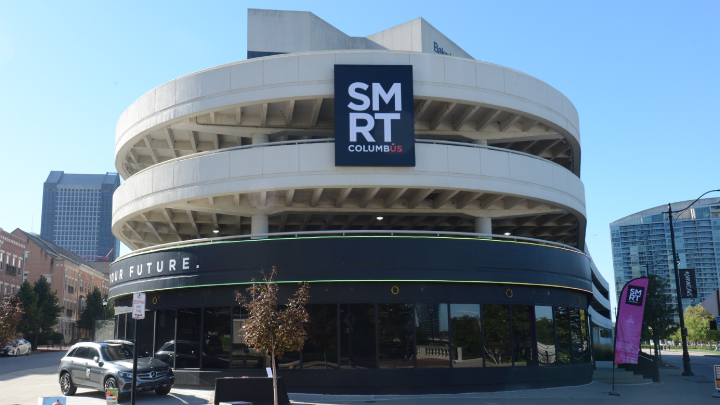
Columbus explores what it means to have “smart” transit

A free, driverless shuttle pulls up to a bus stop in downtown Columbus, Ohio. Because it’s all electric, it’s silent — unlike a diesel-powered bus. John Hargrave is an operator, although he’s not driving. He’s ready to take over from “Maria,” as the shuttle is called, in an emergency.
“She can operate the whole route herself,” Hargrave said. “Make turns, flow through traffic, stop at traffic lights, pull in and out of her stops.”
After winning a nationwide challenge by the U.S. Department of Transportation in 2016, Columbus formed a public-private partnership, “Smart Columbus.” The government offered one American city $40 million to develop smart technology to help people move around more efficiently.
Mark Patton, the partnership’s vice president, is overseeing the administration of the $40 million in federal funds the city received, plus a further $10 million in private donations. His goal is to make autonomous shuttles, electric vehicles, scooters and bikes part of the daily commute in Columbus.
The first step is making sure people can charge their vehicles.
Smart Columbus plans to install 1,000 electric vehicle charging stations throughout Central Ohio by next year. Patton has been trying to increase electric vehicle adoption from the top down. He set a goal of getting 50 c-suite executives to drive electric vehicles.
“I think we’re at 46, with a year to go,” Patton said. “I’ll crush that goal.”
It’s not all about executives, though, and electric vehicles are just one part of the strategy for the city. Michael Stevens, the city’s chief innovation officer, says the population of Columbus is expected to double in size — to more than two million people — by 2050, meaning it’s important to encourage people to take public transportation.
Josh Lapp, an urban planner and advocate for affordable transportation for the city, said he appreciates Smart Columbus’s goals, but hopes the project’s fruits will be accessible to all Central Ohioans.
“I want to see how those projects support the transit system, not how those projects can replace the transit system,” Lapp said.
Smart Columbus is creating a playbook so other mid-sized American cities can learn from its experience.
There’s a lot happening in the world. Through it all, Marketplace is here for you.
You rely on Marketplace to break down the world’s events and tell you how it affects you in a fact-based, approachable way. We rely on your financial support to keep making that possible.
Your donation today powers the independent journalism that you rely on. For just $5/month, you can help sustain Marketplace so we can keep reporting on the things that matter to you.












